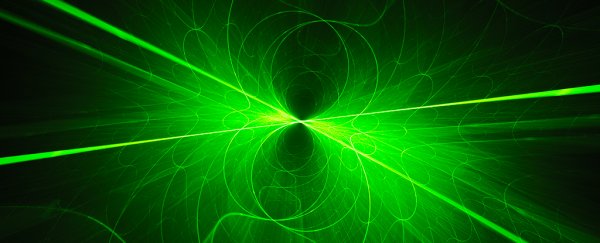New technology being developed by the MIT's Lincoln Laboratory uses laser light to excite moisture in the air surrounding a target's ear, causing it to quietly whisper a personal message from several metres away.
"Our system can be used from some distance away to beam information directly to someone's ear," says MIT team leader and physicist Charles M. Wynn.
You probably don't need us to count off potential applications for such a device, which range from military applications to targeted advertising.
Pretty much anywhere ambient noise is a problem - or earphones are unsuitable - a laser-tongued whisper could do the job.
In case you're worried about the whole 'laser in your ear' thing, the developers promise it's harmless.
"It is the first system that uses lasers that are fully safe for the eyes and skin to localise an audible signal to a particular person in any setting," says Wynn.
Technology that channels sound into a narrow field has been around for decades.
Most of it uses speakers to intensify soundwaves or channel ultrasound within a small area. Although useful for keeping sound relatively confined, they require the listener to be a relatively short distance from the source.
Optical technology based on lasers has the potential advantage of reduced spreading over a distance, with higher frequencies allowing it to carry much further – which is why the team have turned from speakers to lasers.
The heart of MIT's new technology is a 1.9 micrometre thulium laser. Thanks to a principle called the photoacoustic effect, water vapour in the air absorbs the laser's emission, causing it to vibrate at an audible frequency.
"This can work even in relatively dry conditions because there is almost always a little water in the air, especially around people," says Wynn.
"We found that we don't need a lot of water if we use a laser wavelength that is very strongly absorbed by water. This was key because the stronger absorption leads to more sound."
The team tested two methods for transmitting sound. The first simply varied the laser's amplitude through a modulator in a continuous wave, creating vibrations that could be picked up by a microphone 2.5 metres (8 feet) away.
A second process ditched the modulator and used a mirror to sweep the laser back and forth over at the speed of sound in what's known as dynamic photoacoustic spectroscopy, effectively creating louder waves by jiggling more water particles.
"There are trade-offs between the two techniques," says opto-mechanical engineer Ryan M. Sullenberger.
"The traditional photoacoustics method provides sound with higher fidelity, whereas the laser sweeping provides sound with louder audio."
A potential disadvantage of the laser-wiggle method is it works at a very specific distance from the transmitter. Any closer, and the laser's sweep will be too high-pitched. Any further, and the frequency drops below audibility.
Although it was only tested to a volume of 60 decibels (the level of a normal conversation) at a couple of metres, the researchers think they can scale up the distance and volume now they have proof of concept.
"We hope that this will eventually become a commercial technology," says Sullenberger.
Which means in future someone could potentially beam whispers to your ear from significant distances… something that's both slightly unnerving and exciting at the same time.
This research was published in OSA Publishing.
